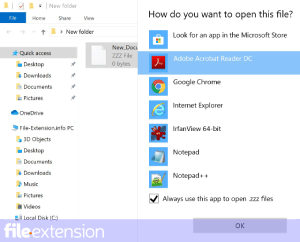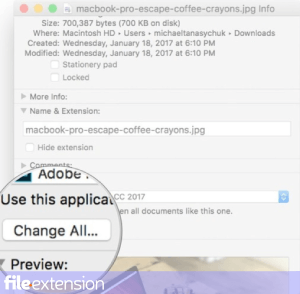
SQL File Extension
Structured Query Language Data Format
-
Category
-
Popularity2.9 (17 votes)
What is SQL file?
SQL file is a file written in Structured Query Language (SQL) used for database management. The file contains database queries as SQL code. SQL file holds instructions for database operations, such as insertion, deletion, update, and data splitting.
Additional information
SQL files use plain text format (ASCII) to store data – users can open adn edit file contensts using and text editor. SQL files are supported by many database tools due to the large popularity of the format.
Programs which support SQL file extension
Files with SQL suffix can be copied to any mobile device or system platform, but it may not be possible to open them properly on target system.
Programs that support SQL file
Updated: 01/15/2020
How to open file with SQL extension?
There can be multiple causes why you have problems with opening SQL files on given system. Fortunately, most common problems with SQL files can be solved without in-depth IT knowledge, and most importantly, in a matter of minutes. The list below will guide you through the process of addressing the encountered problem.
Step 1. Get the MySQL
 Problems with opening and working with SQL files are most probably having to do with no proper software compatible with SQL files being present on your machine. The most obvious solution is to download and install MySQL or one to the listed programs: RazorSQL, DatabaseSpy, Windows Notepad. The full list of programs grouped by operating systems can be found above. If you want to download MySQL installer in the most secured manner, we suggest you visit Oracle Corporation website and download from their official repositories.
Problems with opening and working with SQL files are most probably having to do with no proper software compatible with SQL files being present on your machine. The most obvious solution is to download and install MySQL or one to the listed programs: RazorSQL, DatabaseSpy, Windows Notepad. The full list of programs grouped by operating systems can be found above. If you want to download MySQL installer in the most secured manner, we suggest you visit Oracle Corporation website and download from their official repositories.
Step 2. Check the version of MySQL and update if needed
 You still cannot access SQL files although MySQL is installed on your system? Make sure that the software is up to date. Sometimes software developers introduce new formats in place of that already supports along with newer versions of their applications. If you have an older version of MySQL installed, it may not support SQL format. The latest version of MySQL should support all file formats that where compatible with older versions of the software.
You still cannot access SQL files although MySQL is installed on your system? Make sure that the software is up to date. Sometimes software developers introduce new formats in place of that already supports along with newer versions of their applications. If you have an older version of MySQL installed, it may not support SQL format. The latest version of MySQL should support all file formats that where compatible with older versions of the software.
Step 3. Associate Structured Query Language Data Format files with MySQL
If you have the latest version of MySQL installed and the problem persists, select it as the default program to be used to manage SQL on your device. The process of associating file formats with default application may differ in details depending on platform, but the basic procedure is very similar.

The procedure to change the default program in Windows
- Right-click the SQL file and choose option
- Click and then select option
- To finalize the process, select entry and using the file explorer select the MySQL installation folder. Confirm by checking Always use this app to open SQL files box and clicking button.

The procedure to change the default program in Mac OS
- By clicking right mouse button on the selected SQL file open the file menu and choose
- Proceed to the section. If its closed, click the title to access available options
- Select the appropriate software and save your settings by clicking
- A message window should appear informing that This change will be applied to all files with SQL extension. By clicking you confirm your selection.
Step 4. Verify that the SQL is not faulty
You closely followed the steps listed in points 1-3, but the problem is still present? You should check whether the file is a proper SQL file. It is probable that the file is corrupted and thus cannot be accessed.

1. Verify that the SQL in question is not infected with a computer virus
Should it happed that the SQL is infected with a virus, this may be that cause that prevents you from accessing it. Immediately scan the file using an antivirus tool or scan the whole system to ensure the whole system is safe. If the SQL file is indeed infected follow the instructions below.
2. Check whether the file is corrupted or damaged
If you obtained the problematic SQL file from a third party, ask them to supply you with another copy. The file might have been copied erroneously and the data lost integrity, which precludes from accessing the file. If the SQL file has been downloaded from the internet only partially, try to redownload it.
3. Verify whether your account has administrative rights
There is a possibility that the file in question can only be accessed by users with sufficient system privileges. Log out of your current account and log in to an account with sufficient access privileges. Then open the Structured Query Language Data Format file.
4. Verify that your device fulfills the requirements to be able to open MySQL
If the system is under havy load, it may not be able to handle the program that you use to open files with SQL extension. In this case close the other applications.
5. Ensure that you have the latest drivers and system updates and patches installed
Up-to-date system and drivers not only makes your computer more secure, but also may solve problems with Structured Query Language Data Format file. Outdated drivers or software may have caused the inability to use a peripheral device needed to handle SQL files.
Conversion of a SQL file
File Conversions from SQL extension to a different format
File conversions from other format to SQL file
Do you want to help?
If you have additional information about the SQL file, we will be grateful if you share it with our users. To do this, use the form here and send us your information on SQL file.

 Windows
Windows 













 MAC OS
MAC OS 



 Linux
Linux 




